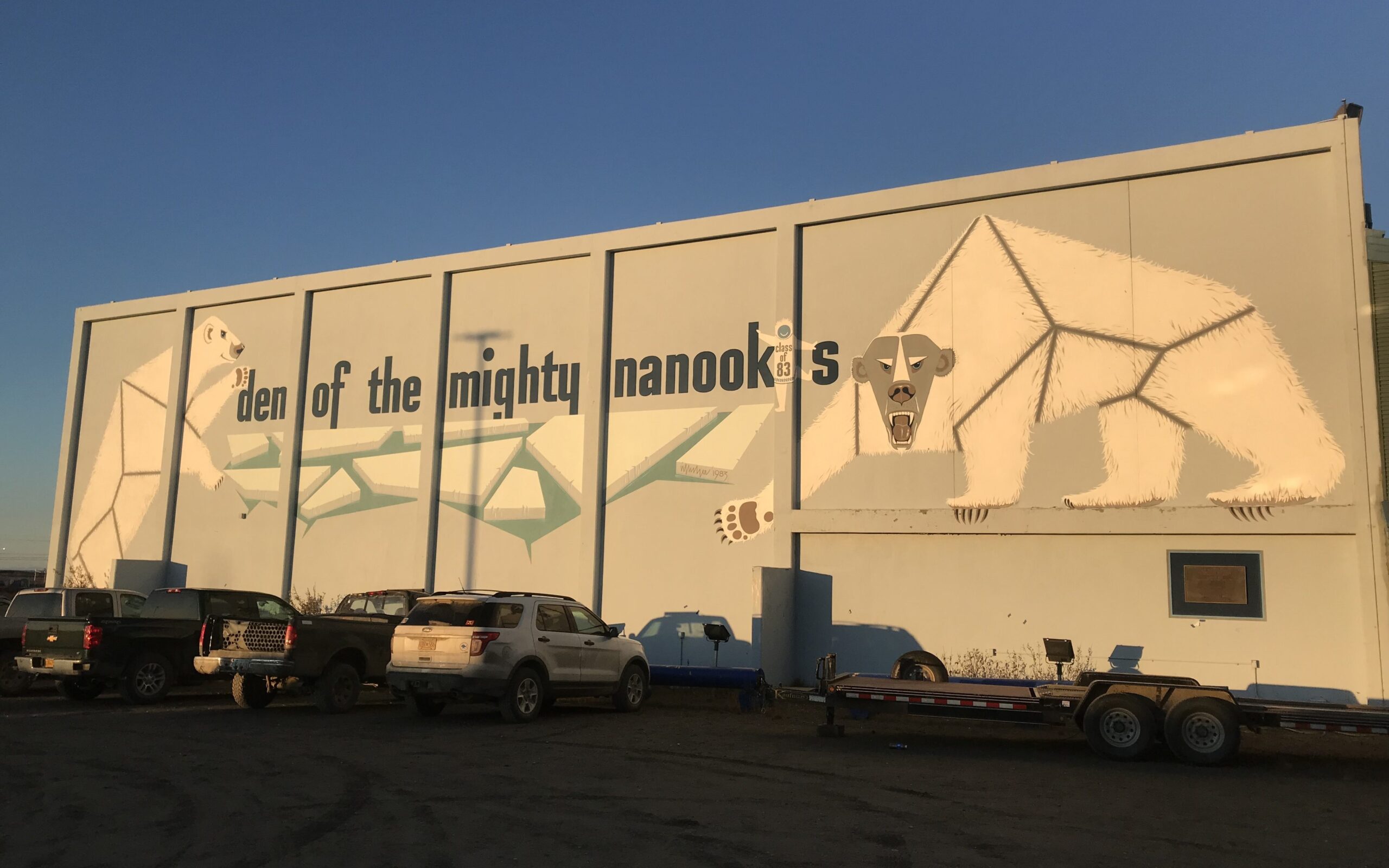Even though Governor Mike Dunleavy has issued an order that all schools will remain closed through the rest of the school year, distance education continues, forcing teachers throughout the state to adapt. But with challenges related to internet access, Nome Public Schools’ teachers have to get creative to meet their students’ educational and emotional needs.
It’s been about one month since school was last in session at a campus building. Remotely and sometimes virtually, teachers at Nome Public Schools are looking to engage their students in ways that are sensitive to their economic status.
“At the junior high we have about, I would say, 25-30% of students able to reliably access the internet.”
– Aaron Blankenship
Aaron Blankenship is a social studies teacher at Nome-Beltz High School.
“So having the options for students to call in and engage with us is great, but there’s just some connectivity problems the school can’t fix. We can’t just suddenly give everybody perfect internet.”
– Aaron Blankenship
Because of the variance in students’ access to internet, NPS has been sending the bulk of its homework and instructional material to students in the form of hardcopy packets. Based on NPS’s procedure, the packets are put in an envelope two days ahead of drop-off and then opened two days after pickup to protect students and staff from potential coronavirus.
Nome School District Superintendent Jamie Burgess explains NPS’s plan for reviewing and adding on additional material.
“Primarily what we’re focusing on right now is not introducing new concepts and new learning; our focus right now is to present kids with concepts that should be relatively familiar. The only exception to that is likely at the high school level. Those students are fairly familiar. The majority of our high school teachers and everything [they] do use the likes of google classroom on a normal basis, so they have started to give out some assignments to students and that’s sort of slowly rolling out.”
– Jamie Burgess
Burgess says that she has received positive feedback from parents on the students having work to do. However, she does stress that parents or guardians should reach out to teachers if the workload feels overwhelming or insufficient. The reality is that not every student will have a home support system to help facilitate learning and Burgess says the district is aware of that.
Blankenship explains the reality that some teachers are facing.
“I’m really tuned in to how my students are doing [in the classroom]. I know how they feel, I pick up on their body language. When we’re in the classroom together I really get where they’re at. I can see immediately when they’re struggling, they have telltale signs of it. We use a lot of different structures in the classroom to assess where students’ learning is at. All those tools have been ripped away from me.”
– Aaron Blankenship
With the distance education being the new normal, NPS teachers like Blankenship don’t have the luxury of seeing their students physically and being able to cue in on students’ specific intellectual and emotional needs.
That can be a challenge in some cases; but Nome-Beltz math teacher Holly Harlow, who is working from her classroom, still feels that she knows how her students are doing. However, virtual socializing isn’t fulfilling the entirety of her students’ emotional needs.
“The opportunities are provided yes, but right now they’re definitely feeling some isolation, and they’re missing their friends. They’re missing being in the building and seeing us.”
– Holly Harlow
Teachers like Harlow and Blankenship must now rely on tools like Zoom and Google Classroom. Even upcoming school board meetings, like the latest session on Tuesday, are being held via Zoom.
While everything is new and subject to change, Harlow has a positive outlook on what NPS’ classroom instruction looks like at this point.
“I wasn’t sure how much work we’d be getting back from students during this time, but they’ve been amazing. We’ve gotten back so much work; I have a stack of grading; every teacher has a fat stack of grading and I think it’s going fairly well. I think at first there was a learning curve, but we worked together and used each other’s knowledge and resources to help deliver instruction, and the kids are responding to that.”
– Holly Harlow
As assignments are being graded, Nome-Beltz Principal Jay Thomas added that 4th quarter grades will carry weight. However, it is unclear just how much weight and leniency will be factored into students’ final semester grades.
Since this coronavirus situation is unprecedented for school districts, Superintendent Burgess says that students’ matriculation will not be affected.
Our approach to this is we’re going to hold our students harmless when it comes to this situation. This is nothing because of their choices, parents’ choices, school choices. Will there be some things we need to address, hopefully when school returns to something resembling normal, in the fall? Absolutely. But it’s not just Nome, it’s the entire country.”
– Jamie Burgess
Burgess acknowledges that it just isn’t possible to replicate a classroom environment in the home and that the school is doing its best and taking feedback as the days go on.
Governor Mike Dunleavy has left open the possibility of small group meetings with teachers and students in the coming months for an “end of year review.” According to Burgess the end-of-year ceremonies for Nome Public Schools, like graduation are still being worked out.
Image at top: Outside Nome Beltz High School in October, 2018. Photo from Katie Kazmierski, KNOM (2018).





